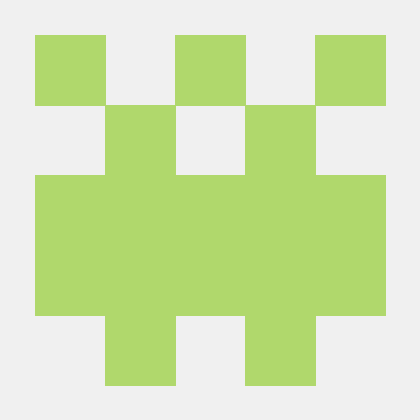UXP Manifest
The manifest is a JSON file that is located at the root of the plugin bundle. It is named manifest.json and is
required for all plugins.
Overview
Each UXP plugin has one manifest.json file that describes the plugin. It contains metadata such as the plugin's name,
version, icons, and entry points.
The manifest file also contains the permissions that the plugin requires. Most importantly, it contains your plugin ID which is used to identify your plugin. (Valid plugin IDs are required for distributing in Adobe's Marketplace, read more in the docmentation.)
Since UXP plugins can be run in a number of different hosts, the manifest also contains a host field that specifies
which host the plugin is for. This is used to identify the plugin in the manifest and in the plugin bundle.
Reference
Manifest
The object at the root of the manifest file.
Properties marked with an asterisk (*) are required.
Example
Copied to your clipboard{"manifestVersion": 5,"id": "YOUR_ID_HERE","name": "Name of your plugin","version": "1.0.0","main": "index.html","host": {"app": "HOST_APPLICATION","minVersion": "HOST_VERSION"},"entrypoints": [{"type": "command","id": "commandFn","label": {"default": "Show A Dialog"}},{"type": "panel","id": "panelName","label": {"default": "Panel Name"}}],"icons": [{"width": 24,"height": 24,"path": "icons/icon.png","scale": [1,2]}],"requiredPermissions": {"network": {"domains": "all"}}}
Properties marked with an asterisk (*) are required.
Properties
| Name | Type | Required | Description |
|---|---|---|---|
manifestVersion * | "5" | required | The manifestVersion indicates the version of the manifest schema. This document describes version 5 of the manifest schema. |
id * | string | required | The id uniquely identifies a plugin and is used to disambiguate plugin contexts, storage, errors, etc. For plugins distributed through the plugin marketplace, the ID has to match the ID in the Developer Distribution portal. |
name * | string | Localized | required | The name visually identifies the plugin in the user interface. It is usually used in a plugin menu listing or launcher for top-level action items. The name can be a string, a key from the StringsDefinition object, or a localized string. |
strings | StringsDefinition | optional | A set of strings used to localize the plugin name and other user-facing strings. It can also be a path to a JSON file containing the StringsDefinition object. Default value
|
version * | string | required | The version indicates the plugin's version. The string has a format of major.minor.patch. |
main | string | optional | Indicates the primary JavaScript or HTML file, relative to the plugin's installation directory. Supports HTML and JS files, such as Default value
|
icons | IconDefinition[] | optional | An array of icons representing the overall plugin or panel icon. The host application uses these icons to present the plugin to the user. If the icons array is missing, a default icon will be used. Default value
|
host * | HostDefinition | required | The host object indicates the plugin's compatibility with the host. Incompatible plugins will:
|
entrypoints * | EntrypointDefinition[] | required | The entrypoints array defines the entrypoints that the plugin provides. |
requiredPermissions | PermissionsDefinition | optional | Indicates the various permissions this plugin requires. These permissions are required before accessing certain API surfaces. Without these permissions in the manifest, API access may fail or throw an error. Some permissions require user consent. Default value
|
addon | object | optional | Not supported in InDesign v18.5 Default value
|
featureFlags | FeatureFlags | optional | A set of feature flags that can be used to enable or disable certain features of the plugin. These flags are used to gate features that are not yet ready for general availability. Default value
|
StringsDefinition
Represents a set of strings used to localize the plugin name and other user-facing strings.
StringsDefinition keys can be used anywhere where LocalizedString is supported.
Example
Your manifest.json file might look like this:
Copied to your clipboard{"name": "my-plugin","strings": {"my-plugin": {"default": "My Plugin","de": "Mein Plugin"}}}
LocalizedString
Represents a localized string. The key is the locale, and the value is the translated string.
Example
Copied to your clipboard{"default": "Hello","en": "Hello","de": "Hallo"}
Properties
| Name | Type | Required | Description |
|---|---|---|---|
default * | string | required | The default string used when no translation is available for the current locale. |
IconDefinition
Represents an icon used by the plugin or specific entry point. The icon may be used in the plugin list, toolbar, or other places.
Properties
| Name | Type | Required | Description |
|---|---|---|---|
width * | number | required | The width of the icon in pixels. |
height * | number | required | The height of the icon in pixels. |
path * | string | required | The path to the icon, relative to the plugin's installation directory. Supports PNG ( |
scale | number[] | optional | Specifies the scaling factors that the icon supports. Example Copied to your clipboard
Results in the following icon files being used:
Default value
|
theme | ("all" | "lightest" | "light" | "medium" | "dark" | "darkest")[] | optional | Specifies the themes that the icon supports. Example Copied to your clipboard
Default value
|
species | ("generic" | "toolbar" | "pluginList")[] | optional | Indicates the suitable use of this icon. The default species is generic, meaning that the icon is suitable for display anywhere. Options:
Default value
|
EntrypointDefinition
Represents an entrypoint provided by the plugin, which can be invoked by the user.
An entrypoint consists of an ID and a label at minimum.
Example
{"id": "myPlugin.myEntrypoint","label": "My Entrypoint"}
Properties
| Name | Type | Required | Description |
|---|---|---|---|
type * | "command" | "panel" | required | The type of entrypoint. Currently, only |
id * | string | required | The ID of the entrypoint. This ID must be unique within the plugin. It is used to identify the code that implements the entrypoint. |
label * | string | Localized | required | The label of the entrypoint. This label is used to display the entrypoint to the user, such as in the plugin menu. |
description | string | Localized | optional | A description of the entrypoint. This description is used in tooltips and other places where a longer description is appropriate, depending on the host app. Default value
|
shortcut | { mac: string, win: string } | optional | A keyboard shortcut that can be used to invoke the entrypoint. Keyboard shortcuts are specified separately for Windows and macOS platforms. If the shortcut is not available in the host application, it will be ignored. Please note: Currently, keyboard shortcuts are only supported in Adobe XD. Example Copied to your clipboard
Keyboard shortcuts are defined separately for each platform. Each definition is a string that follows this syntax:
Letters are case-insensitive (e.g., "Cmd+P" and "Cmd+p" mean the same thing and neither requires pressing Shift). Other keys (including punctuation, arrow keys, or F1-F12) are currently not supported. Please note: If your shortcut collides with a built-in command in the host app, or another plugin's shortcut, your shortcut will be ignored, and you"ll see a warning printed to the developer console. Default value
|
icon | Icon | optional | An icon specific to the entrypoint. If specified, this icon overrides the plugin icon in places where the entrypoint is specifically displayed. Default value
|
minimumSize | { width: number, height: number } | optional | Indicates the desired minimum size of the view. The host may not be able to guarantee the minimum size. The size is defined by width and height in pixels. If no minimum size is specified, the host will use its own default minimum size. Default value (host-specific default) |
maximumSize | { width: number, height: number } | optional | The maximum desired size of the view. The host may not be able to guarantee the maximum size. If the view is hosted in a dialog, resizing can be prevented by setting minimumSize = maximumSize. Default value (host-specific default) |
preferred | { width: number, height: number } | optional | The preferred size of the view when docked, if it can be docked, or for modal dialogs that have no reference_node_id. The host may not be able to guarantee this size. Default value (host-specific default) |
preferred | { width: number, height: number } | optional | The preferred size of the panel when floating. The host may not be able to guarantee this size. See minimumSize for the format. Default value (host-specific default) |
HostDefinition
UXP supports a number of different host applications. The host definition specifies which host app the plugin supports.
Properties
| Name | Type | Required | Description |
|---|---|---|---|
app * | "PS" | required | The host app that the plugin supports. Possible values:
|
minVersion * | string | required | The minimum version of the host app that the plugin supports. The version string follows the format of |
maxVersion | string | optional | The maximum version of the host app that the plugin supports. Default value
|
PermissionsDefinition
To ensure that plugins are secure, UXP requires that plugins declare the permissions they need to function.
Pro tip
Make sure you configure the most accurate permission for your use case because in the future we will ask users to provide their consent based on it. For example, for file operations, you may find 'fullAccess' to be the least restrictive and hence the easiest to pick, but a user may not be comfortable giving full access to their system unless it's absolutely necessary and might deny the installation of your plugin altogether.
Properties
| Name | Type | Required | Description |
|---|---|---|---|
clipboard | "read" | "readAndWrite" | optional | Enables the plugin to read and write to the clipboard. The clipboard recipe has more examples. Possible values:
Default value
|
localFileSystem | "plugin" | "request" | "fullAccess" | optional | Enables the plugin to access the file system. The file-operation recipe has a detailed example. Possible values:
Default value
|
network | NetworkPermission | optional | Enables the plugin to access the network. For example, to make HTTP requests (XHR, fetch, etc.), load images ( Default value
|
webview | WebviewPermission | optional | Enables the plugin to use webviews in its UI to display web content or complex UI. Default value
|
launchProcess | LaunchProcessPermission | optional | Enables the plugin to launch processes using APIs like Default value
|
allowCodeGenerationFromStrings | boolean | optional | Allows you to generate code from strings. You will need this while using inline event handlers for HTML elements, Default value
|
ipc | IpcPermission | optional | Enables the plugin to communicate with other plugins. Default value
|
NetworkPermission
Specifies the domains that the plugin can access in network requests.
Example
{"domains": ["https://example.com","https://*.adobe.com/","wss://*.myplugin.com"]}
Then, in your plugin code, you can make network requests like this:
const response = await fetch("https://example.com");
Or load images like this:
<img src="https://example.com/image.png" />
You can also allow access to all domains by setting domains to "all".
{"domains": "all"}
Properties
| Name | Type | Required | Description |
|---|---|---|---|
domains * | string[] | "all" | required | The domains that the plugin can access. Can be a list of domains, or the string "all" to allow access to all domains. |
The network recipe has more details.
WebViewPermission
Enables the plugin to use webviews in its UI to display web content or complex UI.
Example
{"allow": "yes","domains": ["https://example.com"],"enableMessageBridge": "localAndRemote"}
Then, in your plugin code, you can use a webview like this:
<webview src="https://example.com" />
To communicate between the webview and the plugin, you can use the message API:
// In the plugin:const webview = document.querySelector("webview");webview.addEventListener("message", (event) => {console.log("Received message from webview:", event.data);webview.postMessage("Hello from the plugin!");});// In the webview:window.addEventListener("message", (event) => {console.log("Received message from plugin:", event.data);window.uxpHost.postMessage("Hello from the webview!");});
Properties
| Name | Type | Required | Description |
|---|---|---|---|
allow * | "yes" | required | Must be set to "yes" to enable webviews. |
domains * | string[] | "all" | required | The domains that the plugin can access. Can be a list of domains, or the string "all" to allow access to all domains. |
enableMessageBridge | "no" | "localAndRemote" | optional | Specifies whether the plugin can communicate with the webview using the message API. Default value
|
Find the detailed WebView API reference or use the webview-starter template plugin in UDT.
LaunchProcessPermission
Specifies the schemes and extensions that the plugin can launch.
For example, if the plugin can launch a web browser, it should specify the http and https schemes.
Example
{"schemes": ["http", "https"],"extensions": []}
Properties
| Name | Type | Required | Description |
|---|---|---|---|
schemes * | string[] | required | A set of schemes that the plugin can launch. Example
|
extensions * | string[] | required | A set of extensions that the plugin can launch. Only relevant for local files (using the Example
|
The launch process recipe has more details.
IpcPermission
Allows communication with other plugins.
Example
{"enablePluginCommunication": true}
Properties
| Name | Type | Required | Description |
|---|---|---|---|
enablePluginCommunication * | boolean | required | Enables plugin communication. |
The inter-plugin communication example has more details.
FeatureFlags
Specifies which experimental features the plugin uses.
Example
{"enableFillAsCustomAttribute": true,"enableSWCSupport": true}
Properties
| Name | Type | Required | Description |
|---|---|---|---|
enableFillAs | boolean | optional | Enables the plugin to use CSS variable in the Example Copied to your clipboard
With the following CSS: Copied to your clipboard
Default value
|
enableSWCSupport | boolean | optional | Enables the plugin to use Spectrum Web Components (requires installing and importing the components separately) Example Copied to your clipboard
Note that you will need to manually install the library, import it (for example Default value
|


